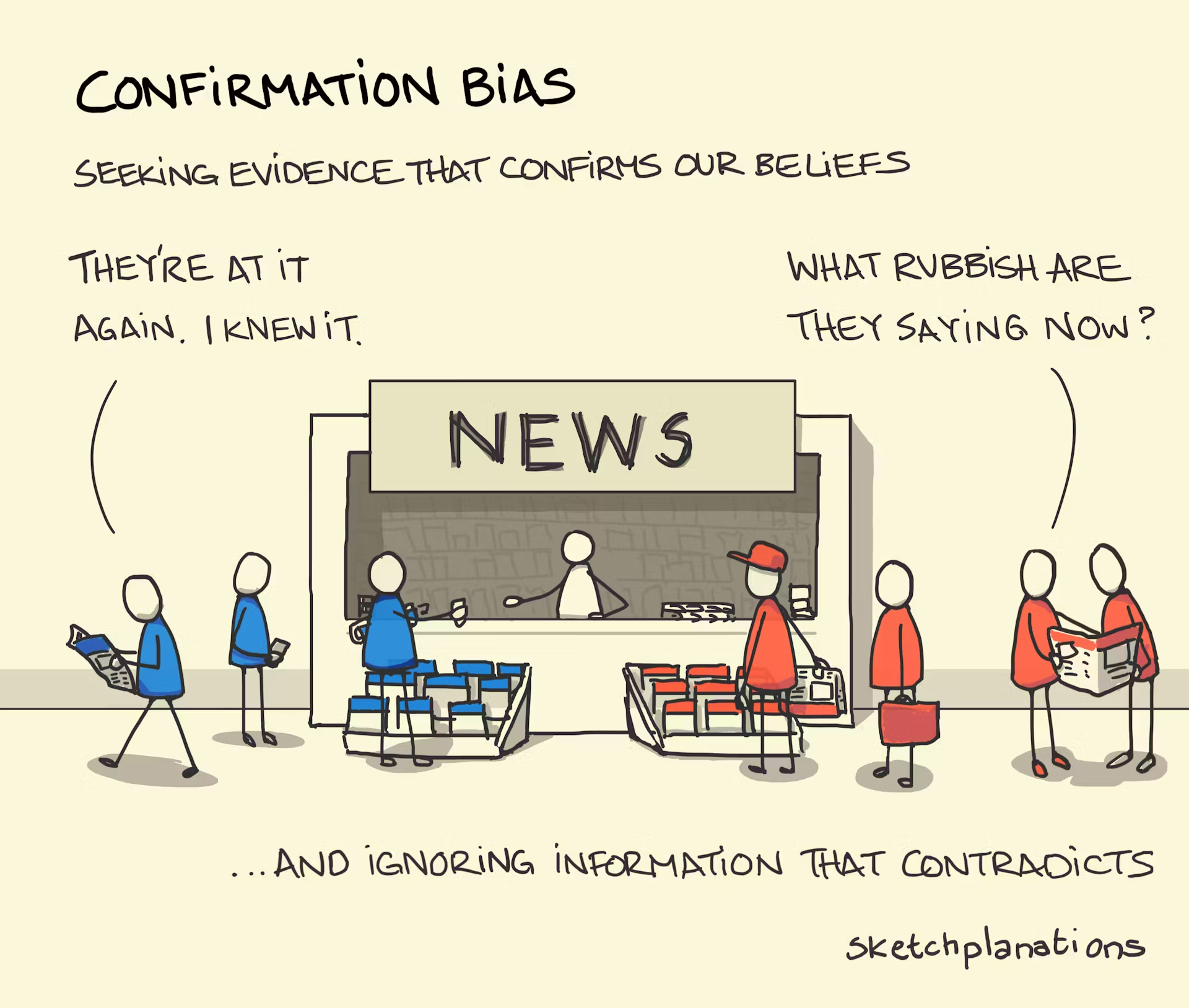Bias: What is it?
Everyone holds bias; it is part of the human experience. A bias is a tendency, inclination, or prejudice toward or against something or someone. Biases are often based on stereotypes rather than actual knowledge of an individual or circumstance. Bias refers to the inability for us to look at a particular set of circumstances from many different angles. This bias is informed by the social, political, economic, cultural, and spiritual systems that one grows up in. Culture, family, relationships, media, education, and all other systems of influence shape us in ways that create bias towards others, which is often unconscious.
Unconscious biases are biases we hold towards others that we are unaware of and, if asked, don’t believe we hold. An unconscious bias is a blind spot, which means it is impossible to see past on your own, and yet it shapes your actions constantly. We cannot eliminate bias, but we can learn how to see it and manage it. Bias can be positive, “women are careful drivers,” or negative, “rich people are thieves.” These beliefs and biases can cause people to prejudge others through stereotypes and assumptions. There are many types of bias; below, we will look at a few prevalent types.
According to Cherry (2024), confirmation bias is “the tendency to listen more often to information that confirms our existing beliefs” (para. 5). Confirmation bias is a cognitive bias that favours information that aligns with your previously existing beliefs or biases, regardless of their truth.

The bias blind spot is a cognitive bias that causes people to be less aware of their own biases than of those of others, leading to the assumption that they’re less susceptible to biases than others. Implicit bias is most often associated with stereotypes. According to the American Psychological Association (n.d.), “Implicit bias, also known as implicit prejudice or implicit attitude, is a negative attitude, of which one is not consciously aware, against a specific social group” (para. 1). Blindsight bias allows us to see bias in others but not in ourselves (Reshamwala, 2016). “Conformity bias is when we simply agree—or conform—with the opinions and behaviours of others in a group setting, even when it’s against our own personal beliefs or knowledge” (Gould, 2023, para. 11). There are many types of bias, and only a few were mentioned above. Could you relate to any of them? What are some examples of biases you hold. Let’s test it and see. Click on the link to complete the Harvard Bias Test.
Activity
Based on the test, what do you now understand about bias, culture, and gender? Did your perspective change? Reflect on some common biases that may be evident in your culture. How is gender bias evident in society? Do you believe men and women are paid equally? How many genders do you believe there are? Can all jobs be performed by all genders? Responses to these questions may indicate gender biases that we hold. Let’s examine an example of confirmation bias as provided by TheRealAcademy (Marino, 2020, p. 2).
Consider the debate over gun control. Let’s say Sally is in support of gun control. She seeks out news stories and opinion pieces that reaffirm the need for limitations on gun ownership. When she hears stories about shootings in the media, she interprets them in a way that supports her existing beliefs.
Henry, on the other hand, is adamantly opposed to gun control. He seeks out news sources that are aligned with his position. When he comes across news stories about shootings, he interprets them in a way that supports his current point of view.
These two people have very different opinions on the same subject, and their interpretations are based on their beliefs. Even if they read the same story, their bias tends to shape the way they perceive the details, further confirming their beliefs.
Can you think of any other examples that demonstrate confirmation bias? As we explore the existence of bias and understand more about how it is unconsciously or consciously evident in our decision making, media, and all social systems around us, we can look at how bias and privilege are interconnected, and aid vulnerable and marginalized populations in overcoming systemic barriers.
References
American Psychological Association. (n.d.). Implicit bias. https://www.apa.org/topics/implicit-bias
Cherry, K. (2024, February 22). 13 Types of common cognitive biases that might be impairing your judgment. Verywellmind. https://www.verywellmind.com/cognitive-biases-distort-thinking-2794763#
Gould, W. R. (2023, June 20). Signs of different types of biases and how to overcome each of them. VeryWell Mind. https://www.verywellmind.com/signs-of-bias-7501512
Marino, K. (2020). About bias: A practical field guide from the Real Academy. Real Academy. https://realacademy.pro/wp-content/uploads/2021/09/About-bias.pdf
Reshamwala, S. (2016, December 16). Peanut butter, jelly and racism [Video]. New York Times. https://www.nytimes.com/video/who-me-biased
Image Credit
Figure 1: Confirmation bias by Sketchplantations, CC BY-NC 4.0.

